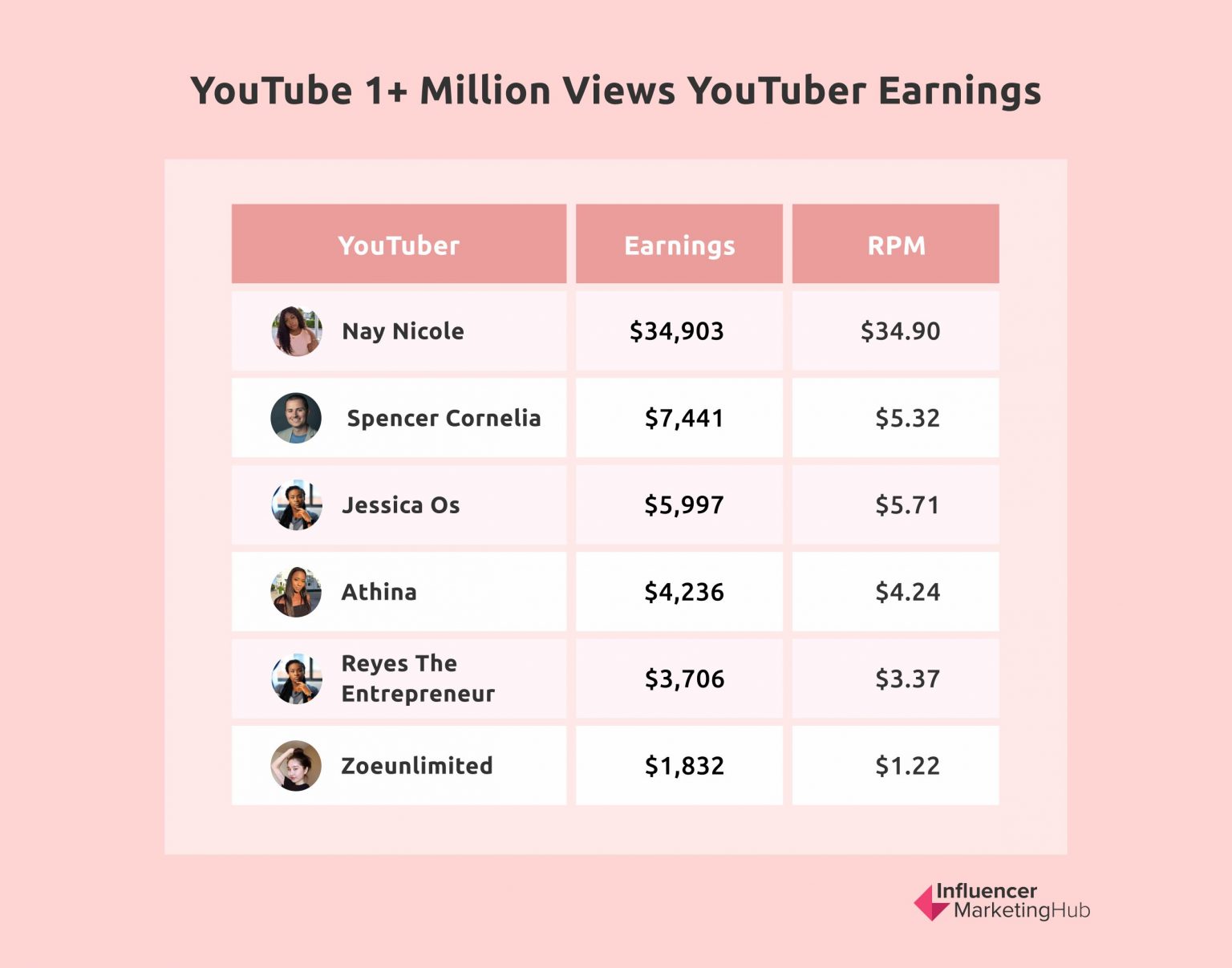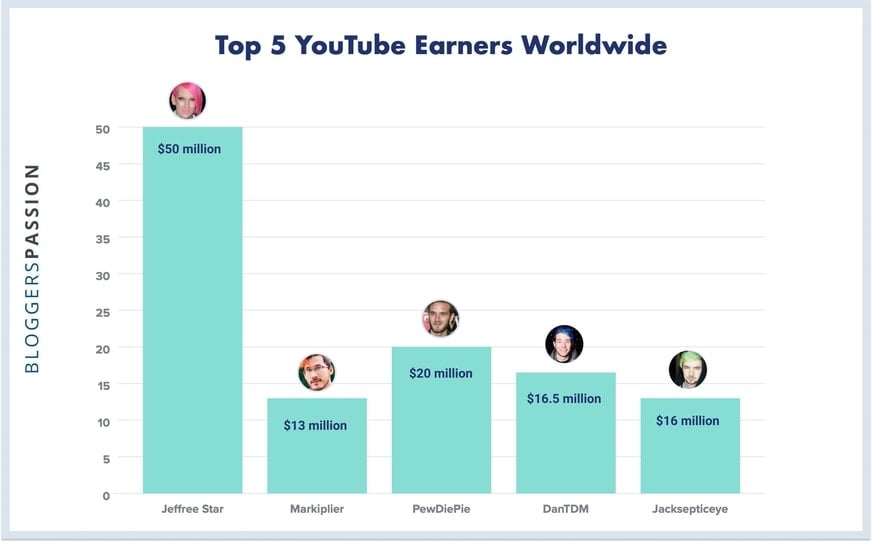How to Monetize Your YouTube Channel: A Beginner’s Guide
Monetizing a YouTube channel can be a lucrative venture, but it requires a solid understanding of the platform’s requirements and ad revenue model. To start earning money on YouTube, creators must meet the platform’s eligibility criteria, which includes having at least 1,000 subscribers and 4,000 watch hours in the past 12 months. Once these thresholds are met, creators can apply for the YouTube Partner Program (YPP), which allows them to monetize their videos with ads.
YouTube’s ad revenue model is based on a cost-per-click (CPC) and cost-per-thousand impressions (CPM) system. Advertisers pay YouTube to display their ads on videos, and creators earn a portion of the revenue generated by these ads. The amount of money a YouTuber can make per view varies widely depending on factors such as the niche or topic of the content, the number of views, and engagement metrics like likes, comments, and shares.
For example, a popular beauty vlogger with millions of subscribers and high engagement metrics may earn significantly more per view than a niche creator with a smaller audience. However, even with a smaller audience, creators can still earn money on YouTube by leveraging their unique voice and perspective to attract and engage with their viewers.
So, how much money does a YouTuber make per view? The answer varies, but on average, creators can earn between $0.01 and $0.03 per view. However, this amount can increase significantly for creators with high engagement metrics and a large audience. To give you a better idea, here are some estimated earnings per view for different niches:
– Beauty and fashion: $0.02 – $0.05 per view
– Gaming: $0.01 – $0.03 per view
– Vlogging: $0.01 – $0.02 per view
– Educational content: $0.02 – $0.04 per view
Keep in mind that these are rough estimates and actual earnings can vary widely depending on a variety of factors. In the next section, we’ll dive deeper into the factors that influence ad revenue and provide tips for maximizing earnings.
Understanding YouTube’s Ad Revenue Model: CPM, CPC, and RPM Explained
YouTube’s ad revenue model is based on a complex system of metrics that determine how much money a creator can earn from their videos. To understand how much money a YouTuber can make per view, it’s essential to grasp the concepts of CPM, CPC, and RPM.
CPM, or cost per thousand impressions, is the amount of money an advertiser pays for every 1,000 views of their ad. This metric is used to calculate the revenue generated by display ads, which are the ads that appear before, during, and after a video. CPM rates vary widely depending on the niche, audience engagement, and ad placement.
CPC, or cost per click, is the amount of money an advertiser pays each time a viewer clicks on their ad. This metric is used to calculate the revenue generated by click-through ads, which are the ads that appear as links below a video. CPC rates are typically higher than CPM rates, as they require a viewer to take a specific action (i.e., clicking on the ad).
RPM, or revenue per thousand impressions, is the amount of money a creator earns for every 1,000 views of their video. This metric takes into account the CPM and CPC rates, as well as the number of ads displayed on a video. RPM is a more accurate representation of a creator’s earnings, as it accounts for the various ad formats and placements.
For example, let’s say a creator has a video with a CPM rate of $2 and a CPC rate of $0.50. If the video receives 10,000 views and 100 clicks, the creator’s RPM would be $2.50 (CPM) + $0.50 (CPC) x 100 (clicks) / 10,000 (views) = $3.00. This means the creator would earn $3.00 for every 1,000 views of their video.
Understanding these metrics is crucial for creators who want to maximize their ad revenue on YouTube. By optimizing their videos and channels for better engagement and ad placement, creators can increase their RPM and earn more money per view.
The Factors That Influence Ad Revenue: Views, Engagement, and Niche
When it comes to determining ad revenue on YouTube, several factors come into play. The number of views, engagement metrics, and niche or topic of the content all impact how much money a YouTuber can make per view.
Views are the most obvious factor, as more views generally translate to more ad revenue. However, the quality of those views also matters. For example, a video with 10,000 views and high engagement metrics (such as likes, comments, and shares) will likely earn more ad revenue than a video with 100,000 views and low engagement metrics.
Engagement metrics are also crucial, as they indicate how well a video is resonating with viewers. Videos with high engagement metrics tend to earn more ad revenue, as they are more likely to be watched until the end and have a higher click-through rate (CTR) on ads.
The niche or topic of the content also plays a significant role in determining ad revenue. Certain niches, such as finance, technology, and healthcare, tend to have higher CPM rates and more lucrative ad opportunities. On the other hand, niches like entertainment, music, and vlogging may have lower CPM rates and fewer ad opportunities.
For example, a YouTuber creating content in the finance niche may earn an average of $5 per 1,000 views, while a YouTuber creating content in the entertainment niche may earn an average of $1 per 1,000 views. This is because finance-related content tends to attract higher-paying advertisers and have a higher CTR on ads.
Some high-performing niches on YouTube include:
– Finance: $5-$10 per 1,000 views
– Technology: $4-$8 per 1,000 views
– Healthcare: $3-$6 per 1,000 views
– Gaming: $2-$4 per 1,000 views
– Beauty and fashion: $1-$3 per 1,000 views
Keep in mind that these are rough estimates and actual earnings can vary widely depending on a variety of factors, including the quality of the content, engagement metrics, and ad placement.
How Much Money Can You Make Per View on YouTube?
One of the most frequently asked questions about YouTube monetization is: how much money does a YouTuber make per view? The answer varies widely depending on several factors, including the niche or topic of the content, the number of views, engagement metrics, and ad placement.
According to industry benchmarks and studies, the average earnings per view on YouTube range from $0.01 to $0.03. However, this amount can increase significantly for creators with high-performing niches, engagement metrics, and ad placement.
For example, a creator in the finance niche with high engagement metrics and ad placement may earn an average of $0.05 to $0.10 per view, while a creator in the entertainment niche with low engagement metrics and ad placement may earn an average of $0.001 to $0.01 per view.
It’s also worth noting that YouTube takes a 45% cut of ad revenue, and creators also have to pay taxes on their earnings. This means that the actual take-home pay for creators is typically lower than the estimated earnings per view.
To give you a better idea, here are some estimated earnings per view for different niches:
– Finance: $0.05-$0.10 per view
– Technology: $0.04-$0.08 per view
– Healthcare: $0.03-$0.06 per view
– Gaming: $0.02-$0.04 per view
– Beauty and fashion: $0.01-$0.03 per view
Keep in mind that these are rough estimates and actual earnings can vary widely depending on a variety of factors. The best way to determine how much money you can make per view on YouTube is to experiment with different niches, engagement strategies, and ad placement.
Maximizing Ad Revenue: Tips for Optimizing Your Videos and Channel
To maximize ad revenue on YouTube, it’s essential to optimize your videos and channel for better performance. Here are some actionable tips to help you increase your ad earnings:
1. Optimize your video titles, descriptions, and tags: Use relevant keywords in your video titles, descriptions, and tags to improve discoverability and attract more views. This will also help you rank higher in YouTube’s search results, which can lead to more ad revenue.
2. Use eye-catching thumbnails: Your video thumbnail is the first thing viewers see, so make sure it’s eye-catching and relevant to your content. A good thumbnail can increase click-through rates and views, which can lead to more ad revenue.
3. Promote your videos on social media: Share your videos on social media platforms like Facebook, Twitter, and Instagram to reach a broader audience. This can help drive more traffic to your YouTube channel and increase ad revenue.
4. Engage with your audience: Respond to comments and engage with your audience to build a loyal following. This can help increase views, likes, and shares, which can lead to more ad revenue.
5. Use YouTube Analytics to track your performance: Use YouTube Analytics to track your views, engagement metrics, and earnings. This will help you identify areas for improvement and optimize your content for better performance.
6. Experiment with different ad formats: YouTube offers a range of ad formats, including display ads, video ads, and sponsored cards. Experiment with different ad formats to see which ones perform best for your channel.
7. Optimize your channel for mobile: More and more viewers are watching YouTube on their mobile devices, so make sure your channel is optimized for mobile. This includes using mobile-friendly thumbnails and ensuring that your videos are playable on mobile devices.
By following these tips, you can optimize your videos and channel for better performance and increase your ad revenue on YouTube. Remember to always follow YouTube’s community guidelines and terms of service to ensure that your channel remains eligible for monetization.
YouTube’s Partner Program: How to Get Accepted and Start Earning Money
To monetize your YouTube channel, you need to join the YouTube Partner Program (YPP). The YPP allows creators to monetize their videos with ads, merchandise, and sponsorships. To get accepted into the YPP, you need to meet YouTube’s eligibility requirements, which include:
– Having at least 1,000 subscribers
– Having at least 4,000 watch hours in the past 12 months
– Complying with YouTube’s community guidelines and terms of service
Once you meet these requirements, you can apply for the YPP through the YouTube Studio. The application process typically takes a few days to a week, and you’ll receive an email notification once your application is approved or rejected.
As a YPP member, you’ll have access to a range of benefits, including:
– Monetization options: You can monetize your videos with ads, merchandise, and sponsorships.
– YouTube Analytics: You’ll have access to YouTube Analytics, which provides insights into your viewership, engagement, and earnings.
– YouTube Studio: You’ll have access to the YouTube Studio, which provides tools and resources to help you manage your channel and content.
However, being a YPP member also comes with responsibilities, including:
– Complying with YouTube’s community guidelines and terms of service
– Ensuring that your content meets YouTube’s monetization policies
– Responding to comments and engaging with your audience
By joining the YPP and following YouTube’s guidelines, you can start earning money from your YouTube channel and turn your passion into a profitable career.
Tracking Your Earnings: How to Use YouTube Analytics to Monitor Your Ad Revenue
To track your earnings and optimize your ad revenue on YouTube, you need to use the YouTube Analytics tool. This tool provides insights into your viewership, engagement, and earnings, allowing you to make data-driven decisions to improve your content and increase your ad revenue.
Here are some tips for using YouTube Analytics to track your earnings and optimize your ad revenue:
1. Monitor your earnings: Use the YouTube Analytics tool to track your earnings over time. This will help you identify trends and patterns in your ad revenue, allowing you to make adjustments to your content and optimization strategies.
2. Track your views and engagement: Monitor your views, likes, comments, and shares to understand how your audience is interacting with your content. This will help you identify areas for improvement and optimize your content for better engagement.
3. Analyze your audience: Use the YouTube Analytics tool to analyze your audience demographics, including age, location, and interests. This will help you understand your target audience and create content that resonates with them.
4. Optimize your content: Use the insights from YouTube Analytics to optimize your content for better performance. This includes optimizing your video titles, descriptions, and tags, as well as using eye-catching thumbnails and promoting your videos on social media.
5. Experiment with different ad formats: Use the YouTube Analytics tool to experiment with different ad formats, including display ads, video ads, and sponsored cards. This will help you identify which ad formats perform best for your channel and optimize your ad revenue.
By using the YouTube Analytics tool and following these tips, you can track your earnings and optimize your ad revenue on YouTube. Remember to always keep your target audience in mind and create content that resonates with them.
Conclusion: Turning Your Passion into a Profitable YouTube Career
Monetizing a YouTube channel requires a combination of creativity, consistency, and engagement. By understanding the factors that influence ad revenue, optimizing your videos and channel, and using YouTube Analytics to track your earnings, you can turn your passion into a profitable YouTube career.
Remember, building a successful YouTube channel takes time and effort. Focus on creating high-quality content that resonates with your audience, and engage with them through comments, social media, and other channels.
Don’t be discouraged if you don’t see immediate results. Building a loyal audience and increasing ad revenue takes time, but with persistence and dedication, you can achieve your goals.
So, how much money does a YouTuber make per view? The answer varies widely depending on the factors mentioned earlier, but with the right strategy and optimization techniques, you can increase your ad revenue and turn your passion into a profitable YouTube career.
Start building your YouTube channel today, and don’t be afraid to experiment and try new things. With consistency, creativity, and engagement, you can turn your passion into a profitable YouTube career.








